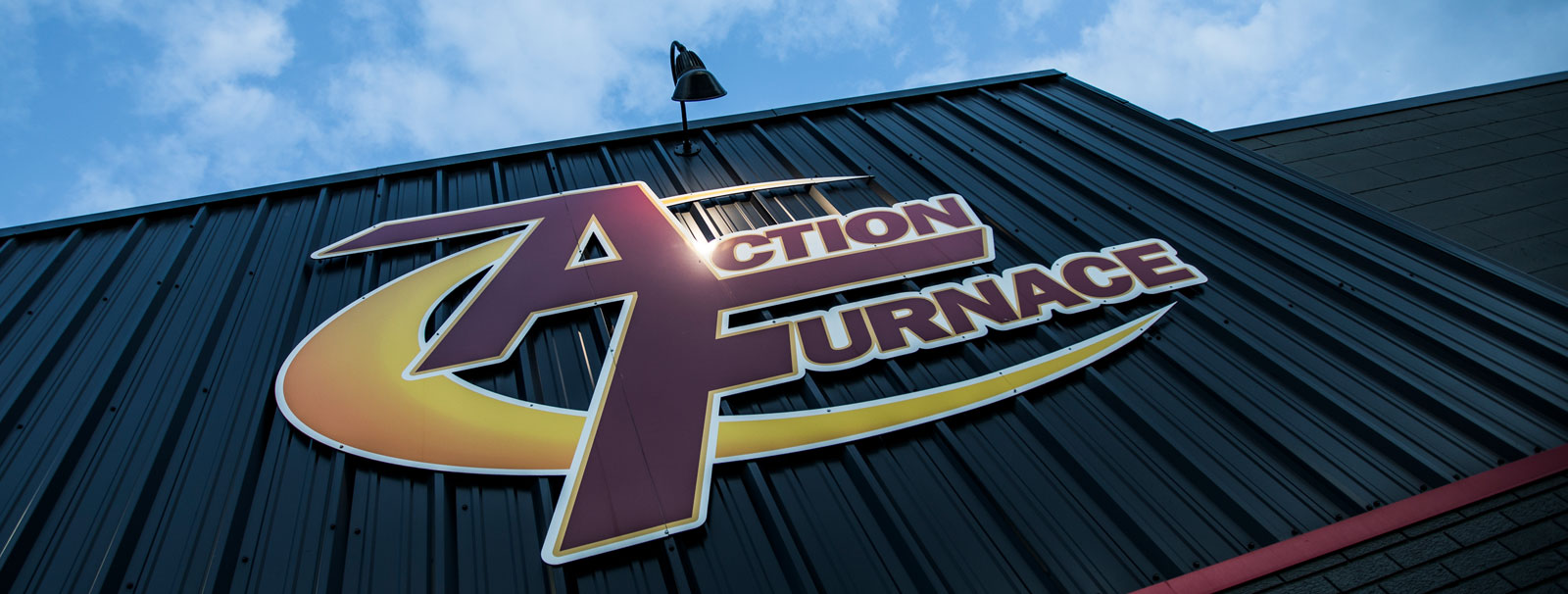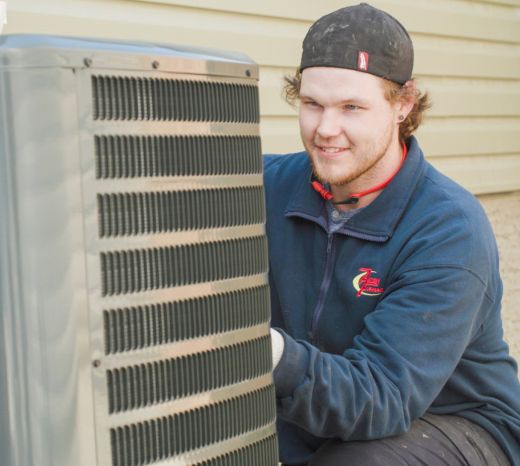Insulated ducts reduce noise from your HVAC and make it more energy efficient. This guide from the team at Action Furnace shows you the steps involved with insulating your ductwork and the materials involved so that you can make sure the job gets done right.
...
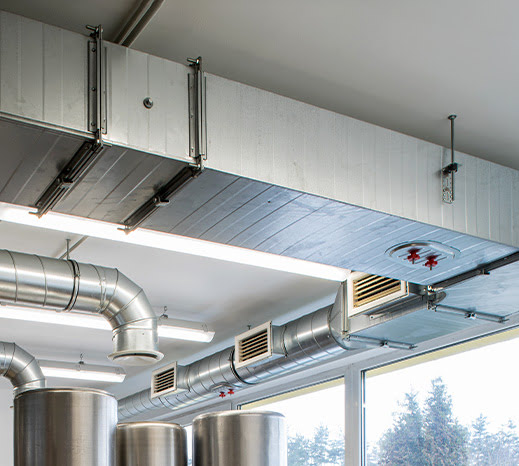
The ductwork in your home is responsible for circulating the air treated by your central heating and cooling equipment, so it’s vital to make sure it works properly. Insulation keeps your ducts energy efficient by preventing heat loss while air moves around your home—but it has other benefits as well!
Our team at Action Furnace cleans and maintains ductwork for homeowners in Calgary, Edmonton, and Red Deer, so we know all about how to insulate ducts and why it matters. This guide breaks down the reasons to insulate your ducts, the materials you can use, and the steps involved in doing it so that you can keep your home comfortable all year long.
Why Duct Insulation Is Important
Correctly insulating the ducts in your home brings the following benefits:
Energy Efficiency
Insulating your home’s ducts prevents the loss of conditioned air through leaks and minimizes heat transfer through the ducts themselves, leading to lower energy bills. It also helps ensure consistent temperatures throughout your home and reduces the strain on your HVAC equipment, which helps your furnace and air conditioner last longer.
Less Noise
Duct insulation can absorb and reduce the noise produced by your furnace and air conditioner, and the materials used can also minimize sound transfer between rooms. All of this helps you and your family enjoy a quieter indoor environment.
Better Indoor Air Quality
Proper sealing and insulation can help keep pollutants, dust, and allergens out of your ductwork by making it harder for them to enter through cracks or leaks. Insulation also reduces the risk of condensation inside ducts, which helps prevent mold and mildew from growing.
Enhanced Home Safety
Finally, insulated ducts can actually make your home safer! Insulation may help prevent fires by keeping hot duct surfaces from coming into contact with flammable materials, and can also prevent backdrafting—where combustion gasses produced by gas furnaces or water heaters can end up being circulated into your home instead of properly vented.
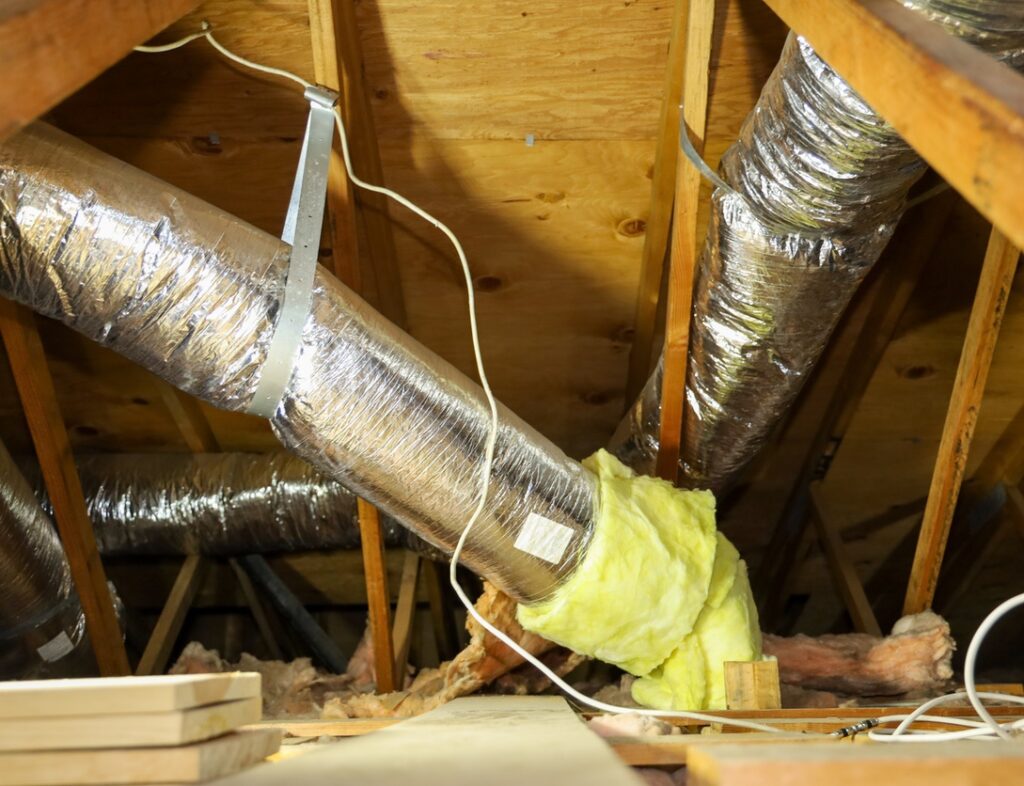
How Duct Insulation Works
Insulation acts as a barrier, slowing down the transfer of heat. This ensures the air inside the duct remains at the desired temperature as it travels throughout your home. By minimizing heat loss or gain, insulation allows HVAC systems to work more efficiently.
R-Values Explained
All insulation materials have an R-value, which measures its resistance to heat flow. A higher R-value means better insulating properties.
For duct insulation, it’s essential to choose materials with the right R-value based on the surrounding climate and your home’s specific needs. Below, we break down three of the most popular choices for Alberta homes: fibreglass, cellulose, and mineral fibre.
Comparing Common Insulation Materials: Fibreglass vs. Cellulose vs. Mineral Fibre
| Material | R-Value (per square inch) | Description | DIY Installation Possible? | Cost | Eco-friendliness |
| Fibreglass | Approximately 3.7 | A lightweight, spun-glass fiber material used for thermal insulation. | Yes | $$ | Moderate |
| Cellulose | 3.5 | A type of spray foam insulation that’s denser than fibreglass. Should only be installed by professionals. | No | $$$ | High (often made from recycled paper) |
| Mineral Fibre | 2.8-3.7 (based on amount) | A type of insulation made from molten rock or slag that’s spun into fibers and bound together. Great for sound reduction and effective at masking HVAC-related noises. Provides a range of thermal resistance depending on the amount used. | Yes | $$ | Moderate |
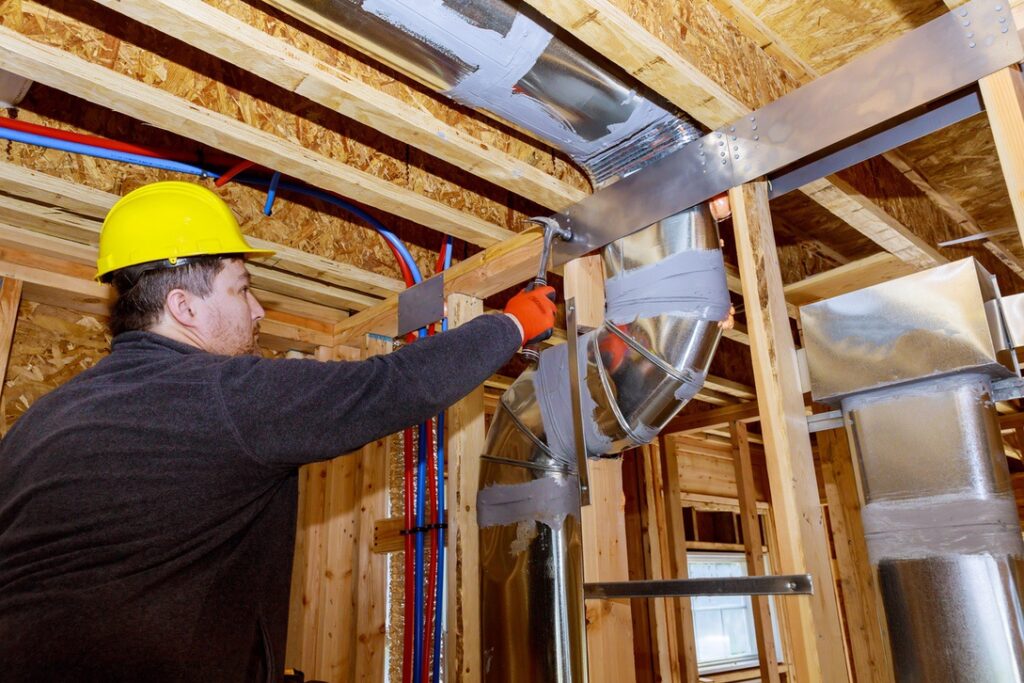
The Steps Involved in DIY Duct Insulation
The best way to make sure your ducts are properly sealed is to get help from our professionals—but if you’re intent on doing it by yourself, we’ve laid out the main steps below. Make sure to use fibreglass or mineral fibre if you’re trying DIY duct insulation, as cellulose can be difficult to apply properly and should not be undertaken by anyone without specific skills and experience.

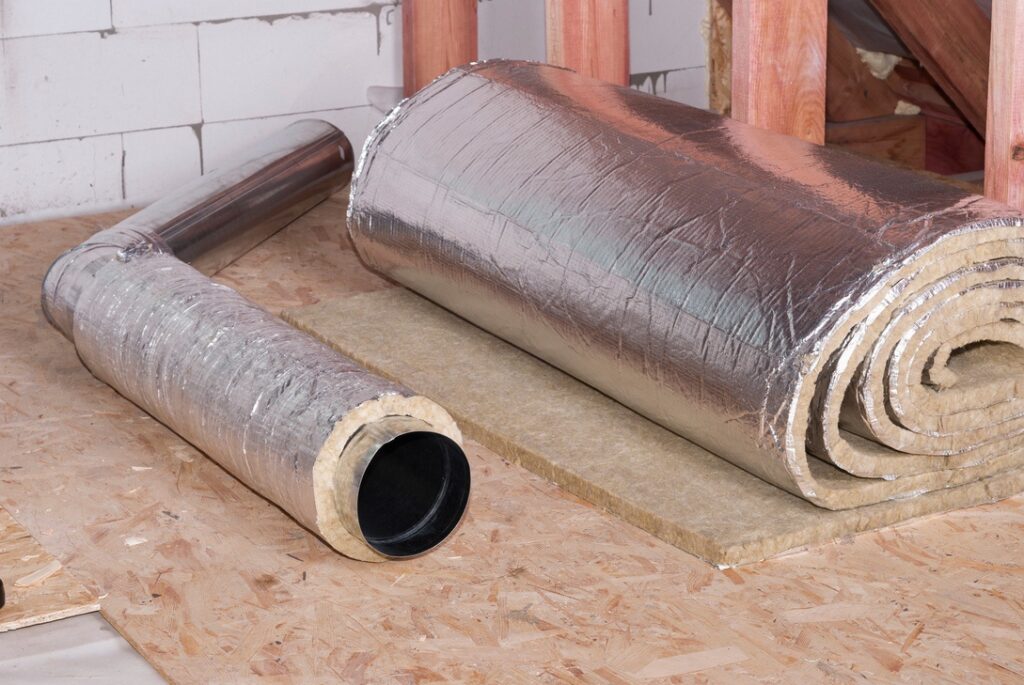
Why Professional Insulation Protects Your Home Properly
The steps above can help you use fibreglass or mineral fibre to insulate your ducts—but we still recommend having professionals take care of it if you want to enjoy optimal energy efficiency. Our team at Action Furnace has the expertise to select insulation material with the right R-value for your ductwork, and to install it correctly so that it lasts as long as possible. We can also identify and address potential risks, such as mold or pre-existing damage.
Contact us today for help with your ductwork, and learn more by checking out the FAQ below. With our help, keeping your home quiet and comfortable is easy.
Frequently Asked Questions about Insulating Ductwork
Why can’t I use cellulose for DIY duct insulation?
Cellulose insulation has to be blown in, which requires specific tools. It’s also a time-consuming process—while professionals can insulate your home with cellulose in a few days or less, doing it by yourself can take weeks. Since cellulose is also more difficult to work with, you’ll probably find it difficult to apply without leaving any gaps.
What does professional duct insulation cost?
The cost of professional duct insulation is determined by several factors, including:
- Home Size: Larger homes with more extensive ductwork will generally cost more to insulate.
- Materials: Cellulose insulation typically costs more, while fibreglass and mineral fibre are less costly options.
- Duct Condition: Ducts that need repairs or sealing before insulation will drive up the cost.
We recommend budgeting a few thousand dollars to have your ducts professionally insulated, but the best way to know how much it will cost is to contact us and ask for a quote.
How long does it take to insulate the ducts in a home?
The time required to insulate your ducts varies from one house to the next. For an average-sized home, it might take anywhere from a few hours to a full day. However, for larger homes or those with complex duct systems, it could take two days or more.
How long does duct insulation normally last?
When properly installed and maintained, duct insulation can last for many years. On average, duct insulation can remain effective for 10-15 years, and in some cases, even longer. However, its lifespan can be influenced by factors like material quality, environmental conditions, and wear and tear. Regular inspections and occasional maintenance are the best ways to keep your ducts in great shape.
